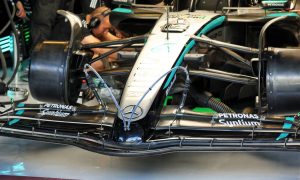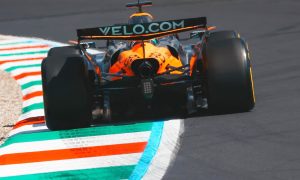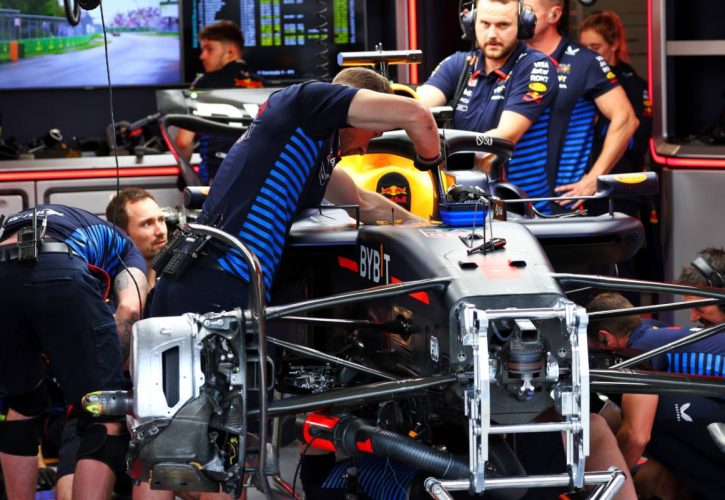
Not all teams have rolled out upgrades for the Canadian Grand Prix weekend in Montreal, with McLaren and Ferrari leaving their packages practically unchanged.
The Circuit Gilles Villeneuve is known for its long straights, challenging chicanes, and heavy braking zones that confront teams and drivers with a unique challenge.
From optimizing aero efficiency to improving brake cooling and handling, here’s a comprehensive run-down of the changes noted this weekend in the pitlane.
Looking to recapture their early-season dominance, Red Bull have mounted a re-profiled rear wing flap on their RB20. This modification aims to improve the car's aerodynamic load distribution while maintaining airflow stability for all the conditions encountered. A crucial adjustment considering the notoriously unpredictable Montreal weather.
The Milton Keynes-based outfit’s engineers haven’t overlooked the track’s punishing demands on braking systems. They've addressed this by optimizing the front brake cooling system with a larger exit duct.
Over at Mercedes, the team’s focus for this weekend lies in optimizing their car's handling and thermal management. Key modifications have been made to the suspension system, specifically the track rod and the forward leg of the lower wishbone.
These adjustments aim to improve airflow from the W15’s new front wing to the underbody. This is particularly crucial for maintaining speed through the circuit's challenging combination of tight chicanes and high-speed straights.
Additionally, the Brackley squad has also addressed the ever-present Canadian challenge of brake overheating by increasing the size of the brake duct inlets.
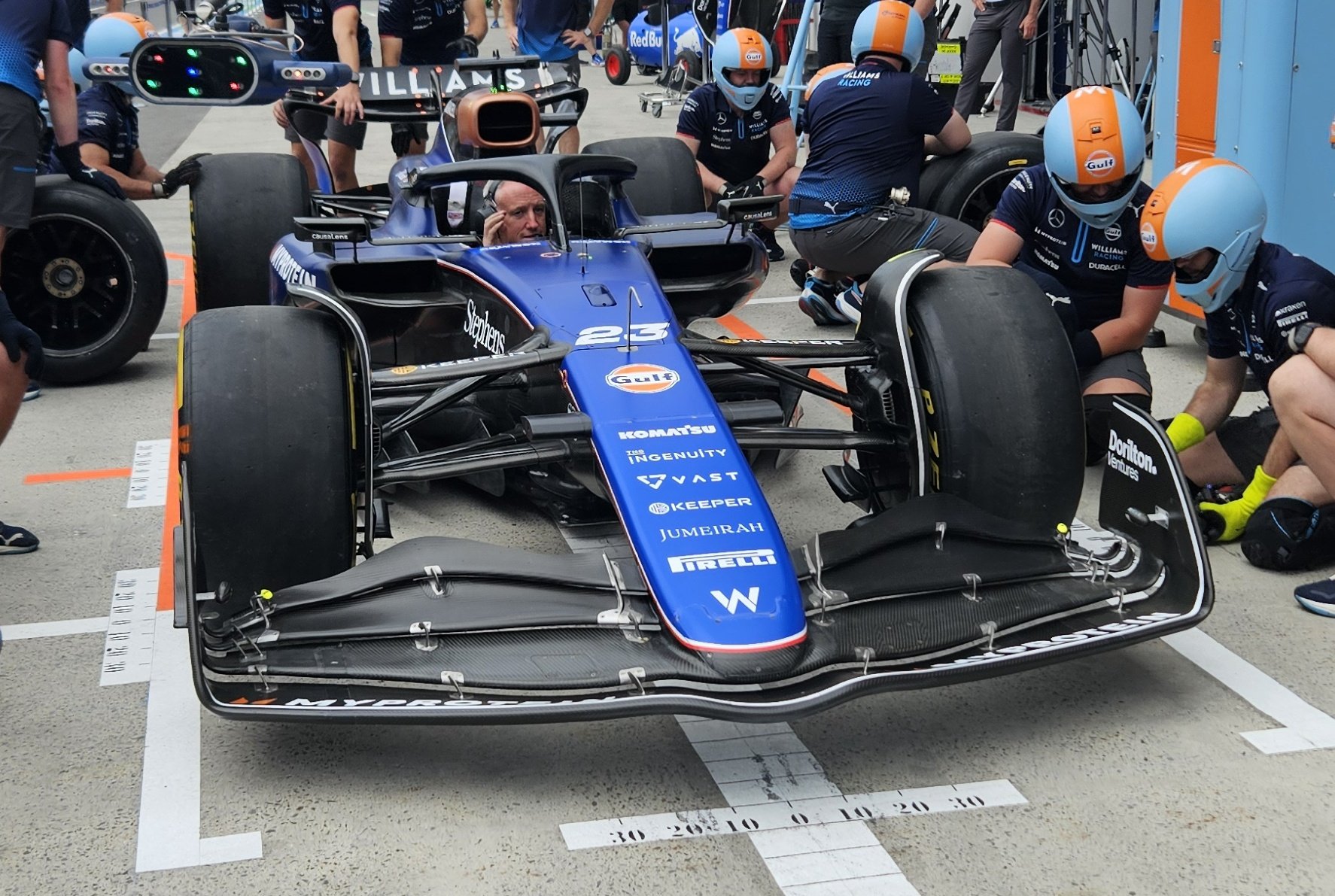
©X/AlbertFabrega
Williams has implemented on its FW46 shorter steering arms, aiming to provide their drivers with sharper feedback and a quicker response time around the circuit’s many twists and turns. But the British outfit has also introduced a new rear pullrod suspension system. This upgrade offers a two-fold benefit: weight reduction and a wider range of ride height adjustments.
Aston Martin has implemented subtle yet potentially significant changes to their car's beam wing. These modifications target improved load generation, especially at the wing tips. This could prove to be a valuable asset when it comes to maintaining aerodynamic balance at high speeds, particularly down the long back straight that Montreal is famous for.
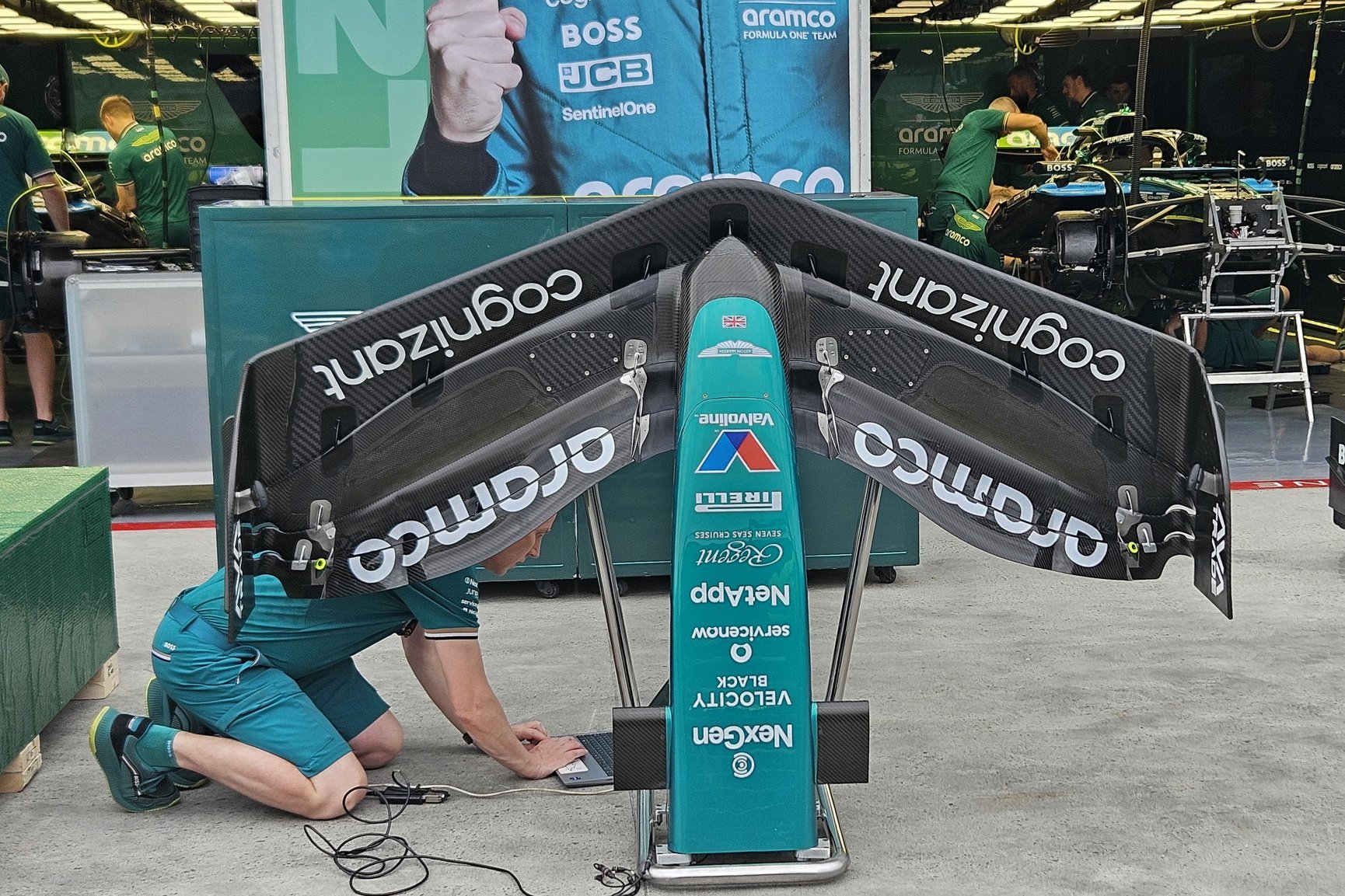
©X/AlbertFabrega
Visa Cash App RB has tweaked the camber and incidence of the upper wing profiles on its rear wing as part of an evolution process. The redesign provides more efficient downforce generation compared to the previous element while retaining the same range of drag suitable for high-speed circuits.
Furthermore, a smaller flap featured on the VCARB01’s front wing reduces the amount of overall load generated by the front wing assembly, in order to balance the low drag rear wing used in Montreal.
Finally, Sauber has opted for a two-pronged approach: a redesigned rear wing for reduced drag, allowing for higher straight-line speeds, and a tweaked beam wing profile to improve overall car performance.
Haas, on the other hand, has focused on a new front wing configuration. This modification aims to achieve a more optimal aerodynamic balance specifically tailored to the demands of the Circuit Gilles Villeneuve.
Keep up to date with all the F1 news via Facebook and Twitter




